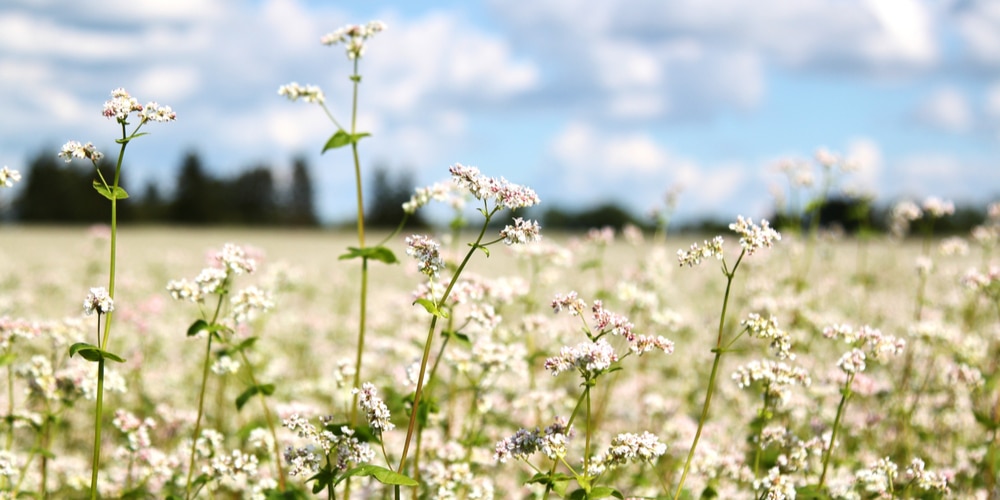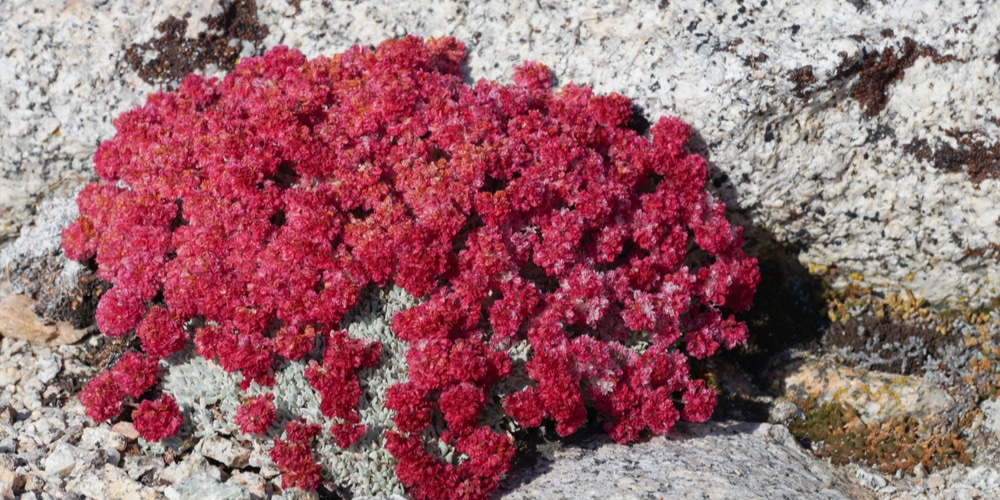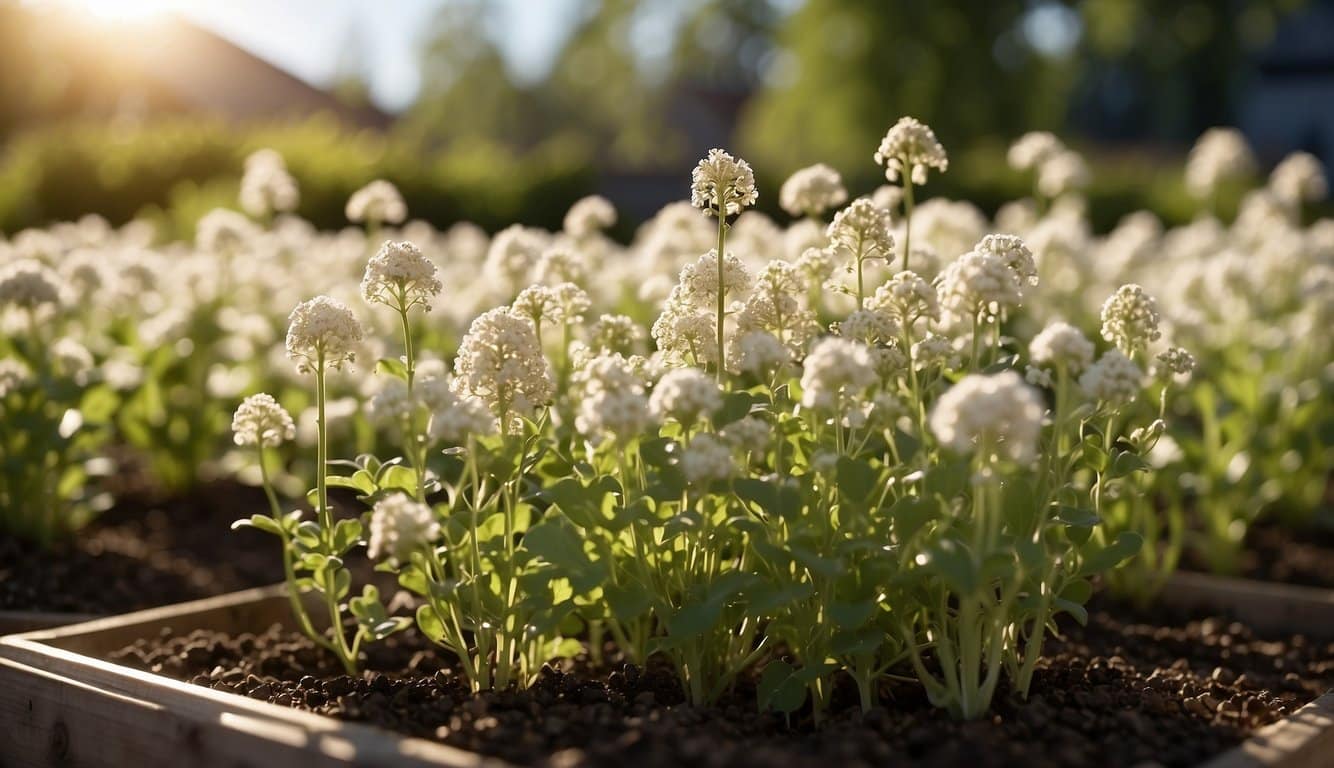| Question | When to Plant Buckwheat? |
|---|---|
| Answer | Late Spring to Summer |
| More Info | Buckwheat thrives in warm conditions and does not tolerate frost. Plant after the last spring frost, typically from late May to July. It matures quickly, within 70-90 days, making it ideal for late plantings. In warmer climates, multiple sowings are possible through the growing season. Buckwheat prefers well-drained soil and full sun. It’s often used as a cover crop to improve soil health, control weeds, and attract beneficial insects. |
Buckwheat Planting:101
Buckwheat is a versatile, fast-growing plant that thrives in a range of environments.
It is known for its short growing season and suitability as a late-planted summer crop.
Buckwheat Planting Basics
Buckwheat seeds should be sown directly into the ground.
Planting depth is typically 1 inch deep, with seeds placed every 2 inches.
Adequate spacing for rows is about 6 inches apart to allow for proper growth and root development.
Optimal Soil Conditions
Buckwheat prefers well-drained, loosely compacted soil.
The plant is adaptable to a variety of soil types, but it thrives in soil with a pH between 5.5 and 6.5.
If the soil is too dense, incorporate organic matter to improve drainage and aeration.
Seasonal Planting Considerations
The best time to plant buckwheat is from late spring, a few weeks after the last frost, to mid-summer.
This ensures the plant avoids frost damage, crucial as buckwheat is sensitive to freezing temperatures.
Pre-Planting Preparation
Successfully growing buckwheat starts with thorough pre-planting preparation.
One should prioritize site selection and soil conditioning to ensure optimal growth conditions for the buckwheat crops.
Site Selection
Choosing the right site is critical for buckwheat cultivation.
The plant thrives in a location that receives full sun exposure.
Buckwheat is adaptable to various soil types; however, it prefers a clean, loosened bed.
Soils should be neutral to slightly acidic, with pH levels ideally to rest between 6.0 and 7.0.
The site should also have good drainage to prevent waterlogging, which can negatively affect root development.
Soil Testing and Amendments
Before planting buckwheat, conducting a soil test is paramount.
A soil test will determine the pH level and nutrient profile of the soil, providing valuable insights into necessary amendments.
If the soil test indicates low pH levels, the addition of lime may be required to neutralize acidity.
Buckwheat typically does not require high levels of nutrients, so avoid nitrogen-rich fertilizers that can promote leaf growth at the expense of flowers and seeds.
Buckwheat Sowing Techniques
When planting buckwheat, the gardener should follow specific techniques to ensure the best germination and growth of the crop.
Timing is essential; optimal planting occurs from spring through to summer, usually starting just a few weeks after the last predicted spring frost.
One must avoid sowing when there is any risk of frost as buckwheat is sensitive to freezing temperatures.
Soil Preparation is crucial for a successful buckwheat crop.
The soil should be lightly tilled to break up the topsoil; however, extensive tilling isn’t necessary as buckwheat can also serve as a cover crop that improves soil structure and fertility.
Here are the sowing details for an effective buckwheat crop:
- Sowing Depth: Approximately 1 to 1.5 inches (2.5 to 3.8 cm).
- Sowing Rate: 1-2 bushels per acre.
- Seed Spacing: 3 to 4 inches apart.
- Row Spacing: Rows should be spaced 12 to 18 inches apart.
It’s recommended to water the plants well if they begin to droop or wilt.
Buckwheat will typically flower within 35-45 days post sowing.
Allowing the plants to flower not only adds aesthetic value to the garden but also attracts beneficial insects.
The gardener should be attentive and cut the buckwheat down before it goes to seed, particularly if a frost isn’t forecasted.
This timing prevents self-seeding and potential weed issues but also allows for using the plants as organic matter if working buckwheat as a green manure.
Post-Planting Care
After planting buckwheat, successful growth relies heavily on well-managed irrigation and the effective control of weeds.
These aspects are critical to ensure the plant thrives and eventually produces a healthy yield.
Irrigation Practices
Buckwheat prefers a balance when it comes to water—it neither tolerates drought nor waterlogging.
Therefore, consistent moisture levels are key, especially during the weeks following germination and until flowering.
Give buckwheat plants a thorough soaking if signs of drooping or wilting appear.
However, avoid excess irrigation, which can lead to poor root development and increase the risk of diseases.
Weed Management
Despite its quick growth, buckwheat can be susceptible to weed competition early on. To manage weeds:
- Cultivation: Shallow cultivation can effectively control weeds without harming the buckwheat’s relatively shallow root system.
- Mulching: Applying a layer of organic mulch helps suppress weed growth and maintain soil moisture.
- Timely Planting: Planting buckwheat after the last frost can outpace the growth of many common weeds, ensuring the buckwheat dominates the field.
Regular monitoring and control will help buckwheat establish properly and prevent significant loss of nutrients and sunlight due to weed competition.
Harvesting and Crop Rotation
When it comes to harvesting buckwheat, timing is critical.
The plant reaches maturity roughly 30-45 days after sowing, at which point it begins to flower.
Ideally, one should monitor the plants and plan to harvest before the seeds fully mature, especially if the goal is to prevent self-seeding.
Harvesting can be done when approximately 75% of the seeds have turned brown.
The yield of matured buckwheat typically ranges from 20 to 30 bushels per acre.
Incorporating buckwheat into a crop rotation system can be highly beneficial.
As a fast-growing cover crop, buckwheat not only suppresses weeds but also improves soil health.
This is especially significant when a field would otherwise lie fallow.
- Crop Rotation Benefits:
- Enhances soil fertility
- Breaks pest and disease cycles
- Reduces soil erosion
After harvesting buckwheat, the residue can be left on the field to decompose, which adds organic matter to the soil, or it can be tilled under to prepare for the next crop.
Rotating buckwheat with other crops such as vegetables or grains provides an effective disease and pest barrier, thus safeguarding subsequent crops.
Farmers should consider the timing of planting buckwheat within their rotation.
It should be sowed after the threat of frost has passed in spring and early enough to avoid early autumn frosts, which could hamper seed development.
The optimal planting window in regions like New York State is around July 4th, leveraging the shorter days of late summer for seed maturation.
Frequently Asked Questions
In this section, they address several common inquiries regarding the cultivation and management of buckwheat.
What is the ideal growing temperature range for buckwheat?
Buckwheat thrives in a temperature range from 45 to 85 degrees Fahrenheit.
It’s a hardy plant that can handle colder conditions, but it performs best when the weather is moderately warm.
What are the best conditions for growing buckwheat?
For optimal growth, buckwheat prefers well-drained, loamy soils.
It is not particular about soil fertility but it does need a location with full sun exposure to prevent legginess and to support robust flowering.
How can buckwheat be harvested most effectively?
The most effective way to harvest buckwheat is to wait until the majority of seeds have matured, which typically presents as the hulls turning brown.
The plants can then be cut, bundled, and allowed to dry before threshing the seeds.
Can buckwheat be planted to support deer habitat, and if so, when?
Buckwheat is indeed a beneficial plant for deer habitat, providing both cover and a food source.
Planting can start from late spring to late summer, as deer will utilize the plant throughout its growth cycle.
Is it possible to grow buckwheat as a no-till cover crop?
One can grow buckwheat as a no-till cover crop, which helps improve soil structure and fertility.
As a fast grower, buckwheat quickly establishes itself, even without tilling.
Does buckwheat have the ability to suppress weed growth?
Its dense growth habit enables buckwheat to suppress weeds effectively by shading the soil and limiting the germination and growth of unwanted plants.
This makes buckwheat an excellent choice for weed management in crop rotations.
Last update on 2025-04-04 / Affiliate links / Images from Amazon Product Advertising API





